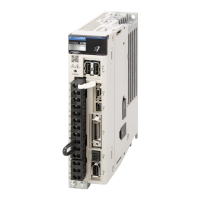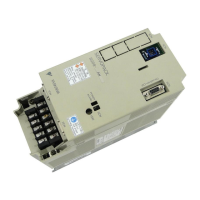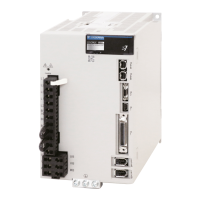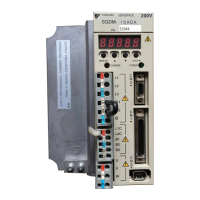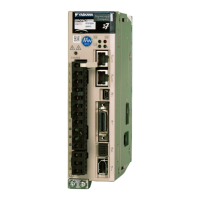6.6 Slave CPU Synchronization
6.6.8 Handling Input Errors
6-27
Confirmation Method on the Slave
Check bit 7 (SYNC) in the Command Status parameter (IW+1) in the second word of
the input registers that were assigned to the slave station.
SYNC = 1: Slave CPU is synchronized.
SYNC = 0: Slave CPU is not synchronized.
Refer to the following sections for details on the command status.
11.3.7 Command Status on page 11-33
6.6.8
Handling Input Errors
Write the application program so that input data is not used while there is an input error.
You can use the following procedure to check for input errors from the application programs in
the master and slave.
1.
Check the Input Error Status system registers (SW00213 to SW00215).
Master: Bit status of station assigned to the slave
Slave: Bit status of local station number
1: I/O error
0: No I/O error
If there is an I/O error, the I/O data will be cleared to zeros. Refer to the following manual for details on
errors.
MP3000 Series MP3200/MP3300 Troubleshooting Manual (Manual No.: SIEP C880725 01)
Bit 7 Bit 6 Bit 5 Bit 4 Bit 3 Bit 2 Bit 1 Bit 0
SYNC SYNCRDY SBUSY Not used.
ALM_CLR_
CMP
CMDRDY D_WAR D_ALM
If synchronization is lost, e.g., due to a communications error, during slave CPU synchronization,
slave CPU synchronization will be automatically restarted if SLVSC (Slave CPU Synchronization
Restart Control) is set to 0 (restarting allowed). However, the input data starting from the third
word in the input registers (IW + 2) that is input before SNYC changes to 1 (slave CPU
synchronized) will not be reliable, so do not use it.
IW+0
IW+1
IW+2
IW+3
Input Registers
7 6 5 4 3 2 1 0
(Not used.)
Command Status
Data 1 Low
High
Data 2 Low
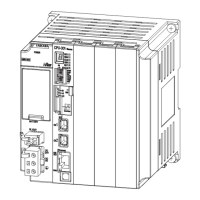
